During the colder seasons, gloves are a must-have fashion accessory. It appears challenging to pick a pair of gloves just because of the various colors, materials, and models available. Fortunately, all the factors to consider before buying gloves are listed here. Depending on the situation, you may quickly locate the ideal pair of gloves with the help of this guide.
When looking for a new pair of gloves, there is no option more effective than trying them on first. Once you’ve decided on the color and type of gloves best for you, try them with your fingers to see how comfortable they are.
Because determining the appropriate glove size may be challenging, we have compiled a detailed reference on glove sizing that will assist you in determining the size that will fit your hand comfortably. It would help if you used the conversion chart in the following section to determine your glove size.
Glove Sizes For Men

Finding the perfect glove size will provide increased comfort and ensure an adequate balance of heat and the best possible breathability. Note that some specialized motorcycle gloves will have a 4-way stretch, fully hugging your hand. However, with gloves with non-stretch materials or leather, it is essential to measure the hand size to choose the right pair of gloves. Using our sizing guide, you may choose which glove size is ideal.
| GLOVE SIZE | INCHES | CENTIMETRES | S, M, L OR XL |
| 7 | 7.0 | 18.0 | XS |
| 7½ | 7.5 | 19.0 | S |
| 8 | 8.0 | 20.5 | S |
| 8½ | 8.5 | 21.5 | M |
| 9 | 9.0 | 23.0 | M |
| 9½ | 9.5 | 24.0 | L |
| 10 | 10.0 | 26.0 | L |
| 10½ | 10.5 | 27.0 | XL |
| 11 | 11.0 | 28.5 | XL |
| 11½ | 11.5 | 29.5 | XXL |
Glove Sizes For Women

When choosing to buy gloves, your hand size will be measured around the palm and calculated in inches or centimeters. Note that if you are right-handed, you should measure that hand to avoid buying gloves that are tighter than the size of your hand, causing discomfort when moving. Choosing a pair of gloves that fit your hand size will help you move more quickly and drive more flexibly during travel.
| GLOVE SIZE | INCHES | CENTIMETRES | XS, S, M, L OR XL |
| 5½ | 5.5 | 14.0 | XS |
| 6 | 6.0 | 15.0 | XS/S |
| 6½ | 6.5 | 16.5 | S |
| 7 | 7.0 | 18.0 | M |
| 7½ | 7.5 | 19.0 | M |
| 8 | 8.0 | 20.5 | L |
| 8½ | 8.5 | 21.5 | L |
The Method of Measuring Gloves Step by Step
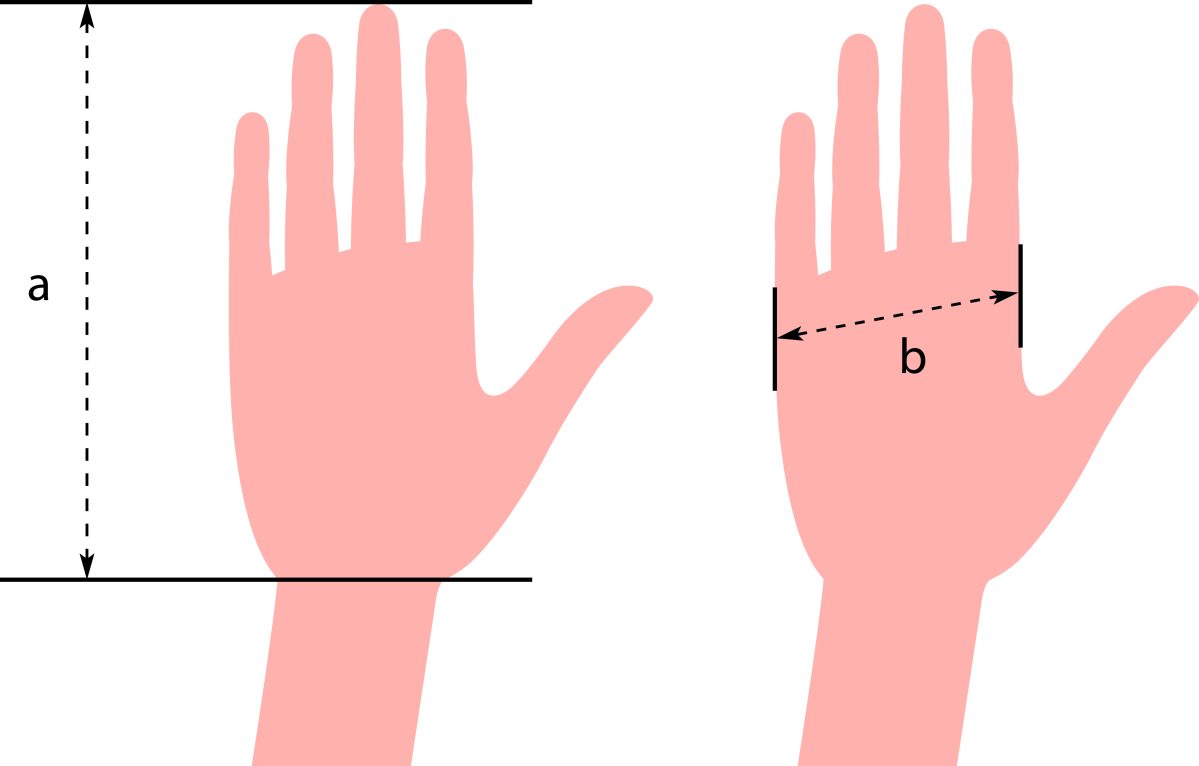
When looking for disposable gloves or work gloves, you should put comfort at the top of your list of priorities. If you get gloves in the correct size, they will fit well and feel quite comfortable. If you want to get an accurate measurement of the size of the gloves you have, which might be a little trickier than you might think, here is a step-by-step procedure that you can follow.
You must locate a particular inch number when selecting the appropriate glove size. Find the inch number that corresponds to your glove size as follows:
Step 1: Take measurements all around.
Take a fabric tape measure and wrap it around the area of your hand that is the widest. When determining the appropriate size for gloves, you should always measure using your dominant hand. To take the measurement, use your left hand if you are left-handed and your right hand if you are right-handed. Your palm should be where the tape measure crosses at its broadest point, over the top of your hand. Take note of how many inches your hand currently measures at this stage.
Step 3: Take a length measurement.
After you have completed the circumference measurement, it is time to move on to the longitudinal measurement. Your hand and fingers should be spread out, and position the tape measure at the end of your middle finger. Then, bring the tape measure down to your hand’s palm and maintain tension where your forearm and wrist converge. Take another measurement, this time in inches, of how long your hand is at this stage.
Step 4: Decide on the higher number, then round it up.
You now have two different figures that are in inches. It’s time to pick the more significant number and round up. For instance, the circumference of your hand might be measured at 512 inches, but the length of your hand might be measured at 634 inches. In this scenario, you would take the number 634, round it up to 7, and use that. That indicates that the size of your gloves is a 7.
Step 5: Convert as appropriate.
Instead of using numbers to determine the size of gloves, several manufacturers use terms like “extra small,” “small,” “medium,” “large,” and “extra large.” If this is the circumstance for the gloves you need to buy, you will be required to use a glove size chart to convert your measurement.
How to measure the hand size above is easy. You can apply this measurement when shopping for gloves or ask an online salesperson to choose the right size. To be sure, you should go to the place to try them on to ensure the quality of the gloves and that the gloves will fit you. From there, you will choose a pair of gloves you like and are satisfied with.
What Components Comprise A Pair Of Gloves?
The three components of the hand that make up a pair of gloves the fingers, the thumb, and the wrist are combined in fashionable and athletic gloves.
Fingers
The length of the fingers varies according to the model and the size. The phalanges of the last two fingers are visible when mitts are worn. The thumb is the only hand part separated from the mitten when worn. These sorts of gloves are also designed to be used by infants and young children, so they do not scratch themselves in the face with their nails.
Thumb
This component must be separated so the user can get a better hold of it with their hands. The thumb size is determined by the same factors that determine the length of the other fingers. To prevent awkward hand movements when wearing boxing gloves, this component is attached to the glove section covering the hand.
Wrist
This component element shifts around depending on what function the accessory is meant to fulfill. Gloves made of cotton, mesh, or wool do not have any distinguishing characteristics on the wrist. Some leather gloves have adjustable and fitting cuffs, making them an excellent choice for shielding your hands from the bitter winter weather.
What Materials Should You Use For Your Gloves?
When choosing a glove, it is necessary to consider how the glove fits, its function, and the material it is made of. It is essential to decide upon the best option. These trendy accessories are worn on the hands to defend against physical assault from the outside world. The function that the gloves are intended to serve directs the appropriate material selection.
Cotton gloves
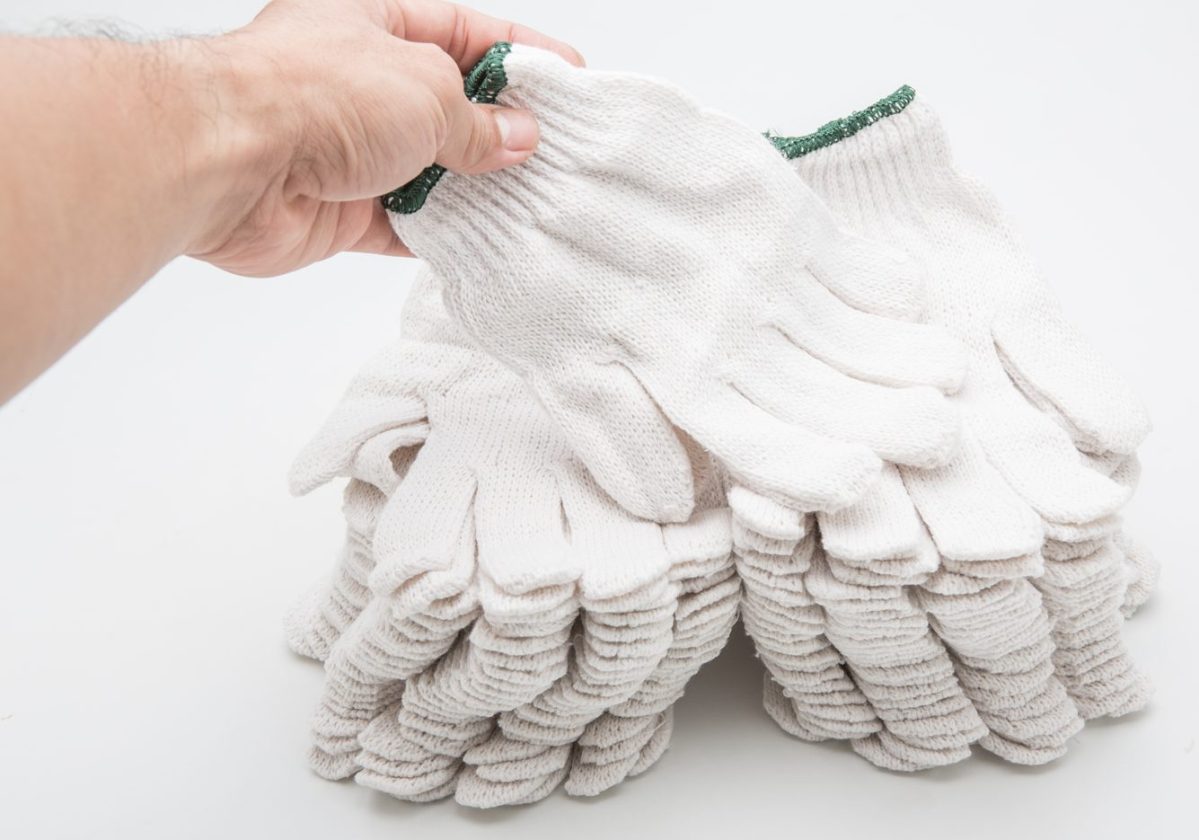
Consider using white cotton gloves if you are attending an official event. These items are appropriate for both young toddlers and grownups. Especially considering how well these accessories complement a dark business suit. Not only do they have a pleasing look, but they also have a therapeutic purpose, which adds to their allure. Cotton gloves are used to treat hands that are either sensitive or prone to some superficial ailments.
Silk gloves

When attending a formal feast or event, it is customary to wear silk gloves. A dazzling look would not be complete without these accessories. Women are the primary users of this content. Despite this, gentlemen can sport silk when they dress formally by pairing it with an exquisite suit. In addition to this, the combination of leather and silk will be prohibited.
Woolen gloves
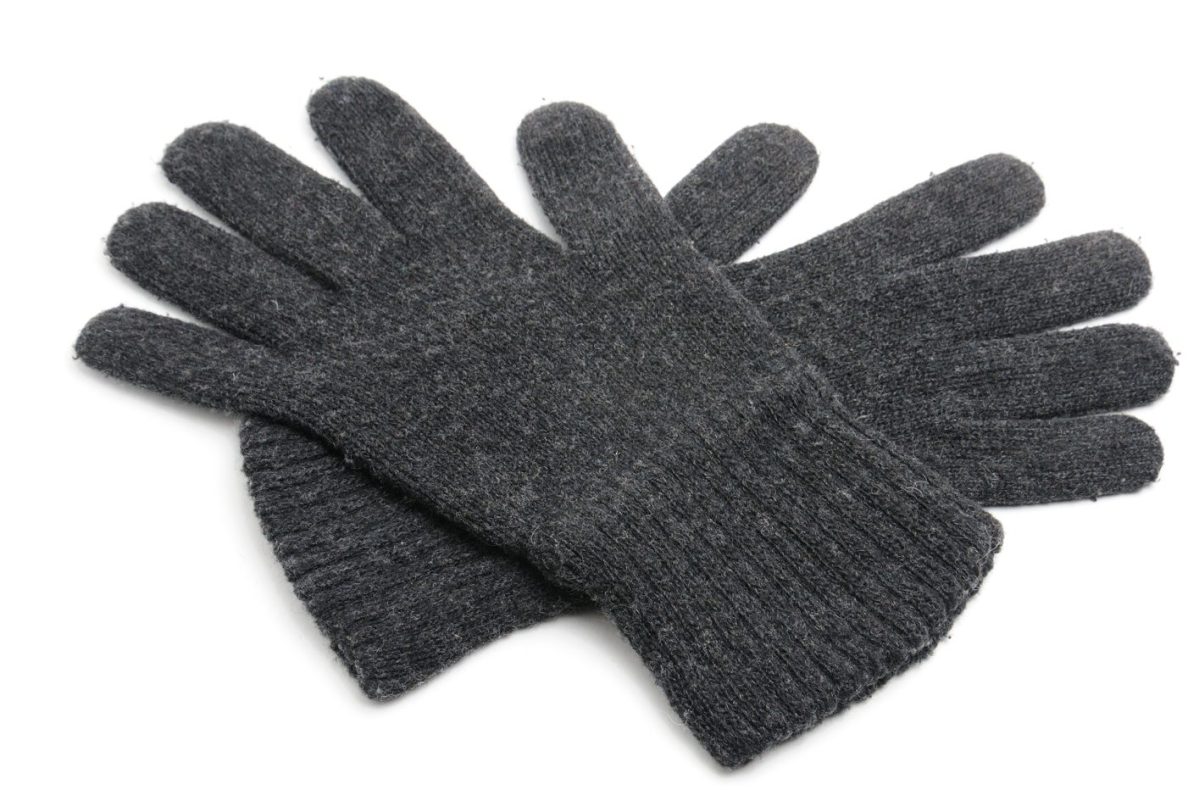
There is no doubt that this fiber offers relief from the cold. On the other hand, wool has the propensity to retain moisture. Acrylic mittens, unlike wool gloves, do not absorb or hold moisture.
Leather gloves
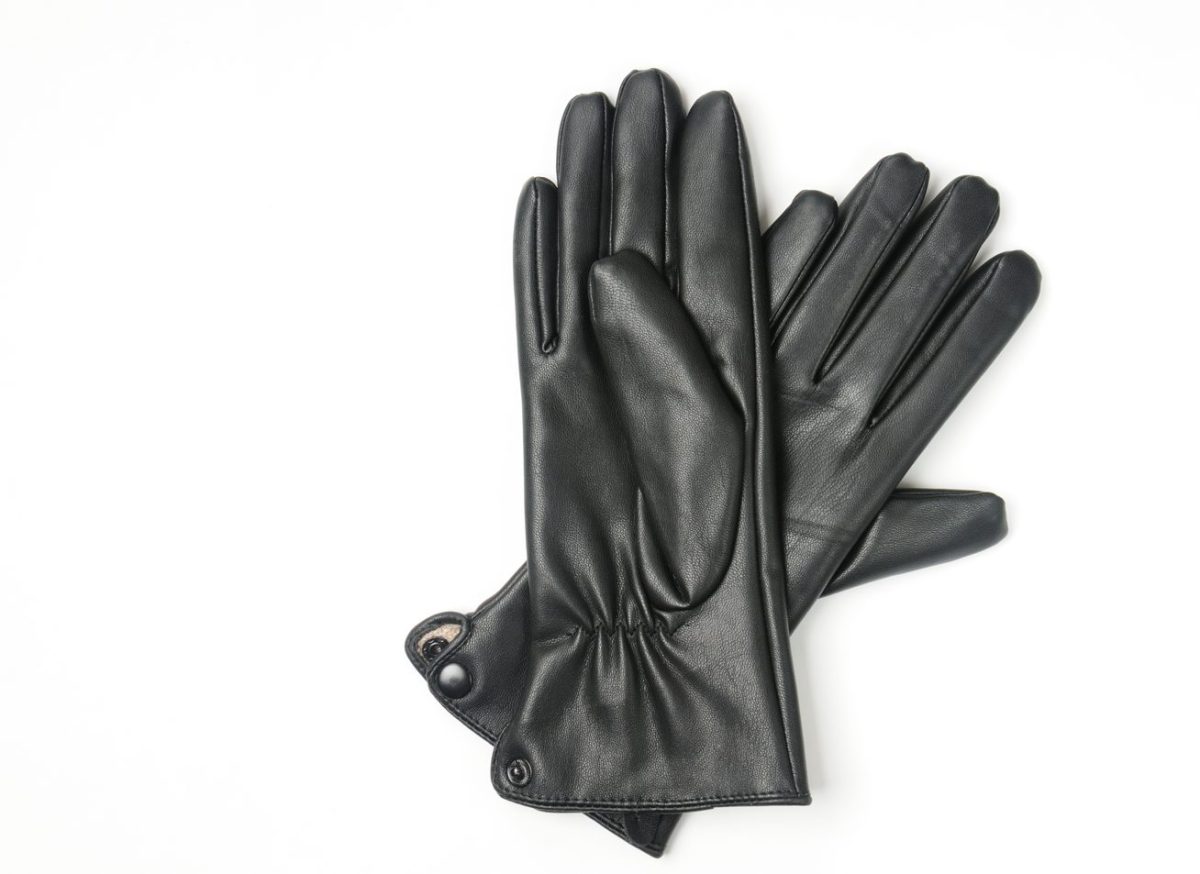
Leather may come from various animals, including cows, pigs, deer, and sheep. These materials are utilized to manufacture gloves that are not only inexpensive but also aesthetically pleasing. The gloves that are made from lamb and goat leather are pretty supple. Despite this fact, the market price for these accessories is relatively high. Because of their durability, gloves made of peccary leather continue to be the most preferred option.
Note Before Buying Gloves
Gloves are an essential piece of protective equipment that must not be overlooked. You must pay attention to the following information regarding the purchase of gloves if you intend to acquire this equipment in the future.
Choose to buy gloves suitable for the nature of the job
Each work environment or specific industry has different characteristics. Therefore, when choosing protective gloves, you must also pay attention to choosing products suitable for nature and the working environment. Specifically like:
If you use gloves for daily use or go to sports, you should choose gloves with a simple and compact design. For this purpose, you also do not need to choose specialized gloves that are too thick and protective because you use them so often; convenience and simplicity will be optimal choices.
If you work in the electrical industry, then the suitable gloves here must be able to insulate. A pair of cut-resistant gloves will be more suitable for environments that often have to come in contact with sharp objects that are easy to injure. As for clean room environments such as laboratories, the number 1 choice here is a pair of gloves resistant to chemicals.
If you use it for long trips, you should choose specialized gloves with a protective hunchback design. This will ensure the safety of your hands during driving on difficult and dangerous roads. Usually, specialized gloves have very thick material and have a protective hunchback; in addition, they are also resistant to water and sun.
Fit, comfortable
Gloves serve as a means of hand protection and an accessory that you can wear while working. Consequently, it is of the highest importance to choose a pair of gloves that are a suitable fit for the wearer. If you want to buy any gloves, choose the right gloves to protect your skin, you should try them on first to check if they are flexible and comfortable enough for you to use when working with machines or grips.
Pay attention to product materials
If the material that makes the product is good, the quality of the product when it is manufactured can be good. Especially for potentially dangerous industries, owning a quality product is more meaningful than ever. Depending on the different fields, the materials used to make gloves differ. Some of the commonly used protective gloves and materials today include:
– Cut-resistant gloves: Made of Kevlar or stainless steel.
– Insulated gloves: Made from natural rubber. Some types may incorporate additional leather for added comfort and tear resistance.
– Oil-resistant gloves: Natural rubber or synthetic rubber.
– Fireproof gloves: Materials used include: leather, cotton lining, aluminum materials, etc.
– Strong acid or base-resistant gloves: In the coloring industry, laboratories often use materials such as cotton, polyester, neoprene, nitrile, fluoroelastomer, PVA, PVC, vinyl, and Viton.
– Medical gloves: Mainly made from nitrile, rubber, vinyl, neoprene, etc.
Durable
No one wants to wear gloves susceptible to damage and must be changed regularly (except for disposable protective equipment such as medical gloves or medical masks). Therefore, give precedence to products that can withstand wear and tear while still being simple to clean when they become soiled.
Types of Protective Gloves
Protective gloves protect hands and wrists from hazards in the office, workplace, and commercial environments. They are crafted from many different materials corresponding to each unique environment. Safety gloves are designed to prevent severe injuries like cuts, chemicals, and burns.
We often have to use our hands when working, so it is straightforward to get hurt. Therefore, the use of protective gloves plays a significant role. Each type of glove will be designed accordingly to maximize the protection of hands against harmful agents. These include chemicals, grease, cuts, scratches, high temperature, low temperature, arc, voltage, static electricity, etc.
Fabric gloves
Fabric gloves are a straightforward type of glove that is crafted from fabric, fiber, or cotton. They are often used for tasks that involve minimal danger, such as gardening, building construction, transporting products, and other similar activities.
Universal gloves with PU/Nitrile coating

This variety of work gloves might be considered an improved variant of the fabric gloves described before. They have an extra coating of a material called PU or Nitrile applied to their surface, which helps boost grip and friction for more effective work.
Anti-vibration gloves
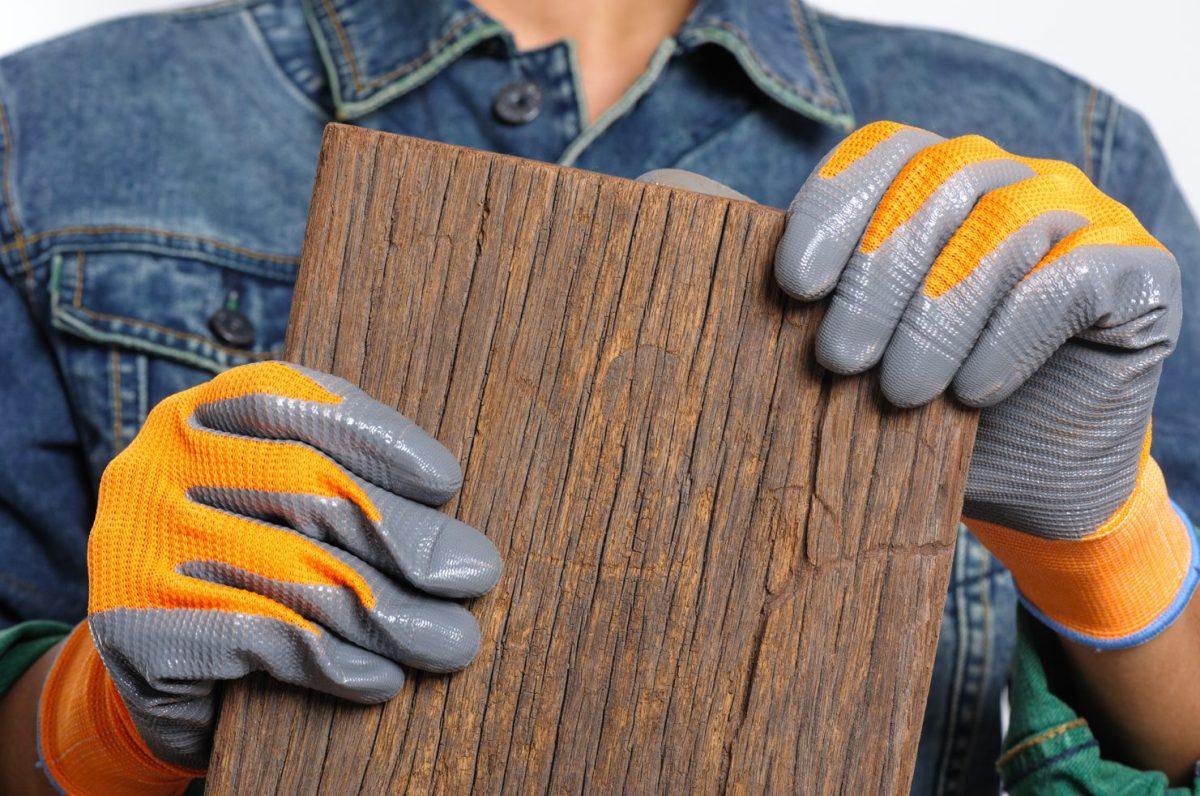
Anti-vibration gloves are a type of means used to protect workers’ hands when using oscillating tools such as hammer drills or conventional drills, and it also focuses on resistance to stabs and skewers. Materials are mainly leather, polyester, nylon, polymer, spandex, or cotton fabric. The palm of the glove has vibration-reducing padding made of leather, gel, or foam rubber padding.
Antistatic gloves
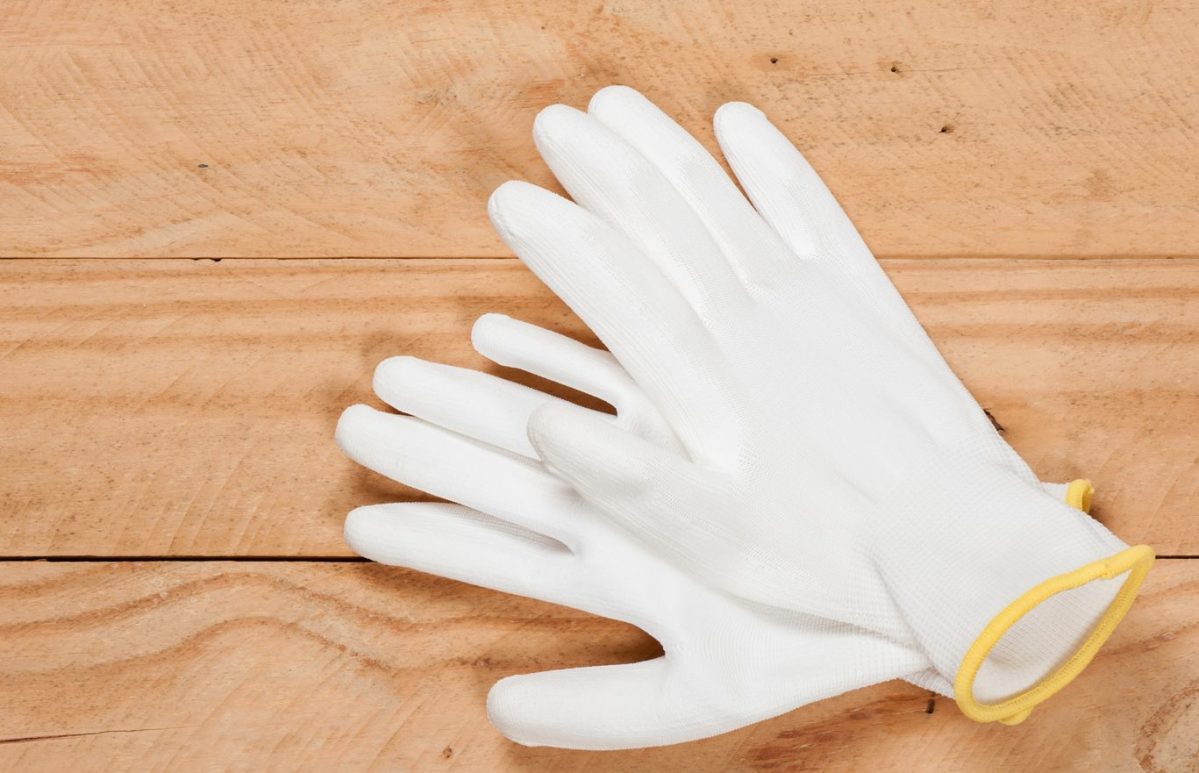
Antistatic gloves are indispensable in strict working environments with antistatic levels, especially in industrial zones producing electronic components, semiconductor manufacturing, IC manufacturing, etc.
Currently, with the diversity of production environments and different protection needs depending on the nature of the work, many types of antistatic gloves are on the market to meet the increasing and more diverse needs. The materials used to produce antistatic gloves can be PVC, polyester, carbon fiber, etc.
Steel-cut-resistant gloves
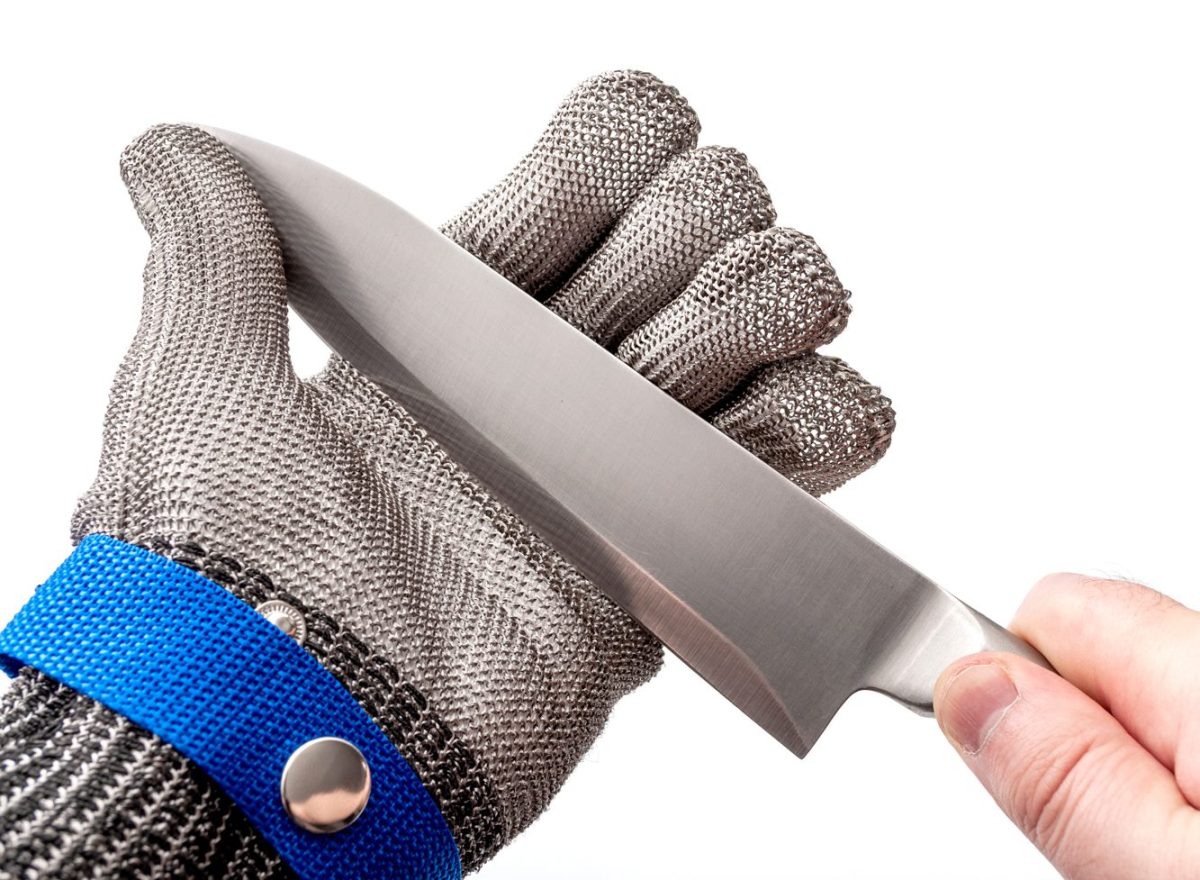
It is the best means of protecting the user from being stabbed or cut. This steel-cut-resistant glove is intended primarily for food processing, woodworking activities, and situations with a high risk of being stabbed or skewered.
It was made of yarn woven from metal rings connected. Leather or fabric can be added for added comfort and connection.
Cut-resistant gloves
Cut Resistant Gloves are a type of protective glove specially designed to protect workers’ hands from cuts or scratches during working with sharp objects such as cutters, sharp knives, razor blades, metal, glass, iron plates, mesh or ceramics, or sharp tools such as knives, scissors, etc.
They are usually made from synthetic fabrics with good physical properties (abrasion resistance, cut resistance, tear resistance), such as kevlar, shaflex, spandex, HPPE yarn, etc.
Chemical-resistant gloves
Chemical-resistant gloves are designed to handle chemicals safely, including hazardous acids and bases. Materials that make up chemical-resistant gloves can be butyl, rubber, nitrile, latex, PVC, and vinyl. Depending on the material as well as the thickness of the glove, it is divided into two types, which are disposable and reusable. They are often applied in industry, food processing, household, etc.
Insulated gloves
This is a specific type of glove for the electrical industry in particular. The primary material made up of it is rubber (natural rubber and synthetic rubber). Typically, rubber gloves are insulating and resistant to acids, alkalis, mild chemicals, high physical strength, and ozone resistance (natural rubber material).
Depending on the thickness of the glove, the insulating ability varies. Usually, there are six levels of insulation: Class 00, 0, 1, 2, 3, and 4 corresponding to the maximum withstand voltage: 500V, 1000V, 7500V, 17KV, 26.5KV, and 36KV.
Heat-resistant gloves
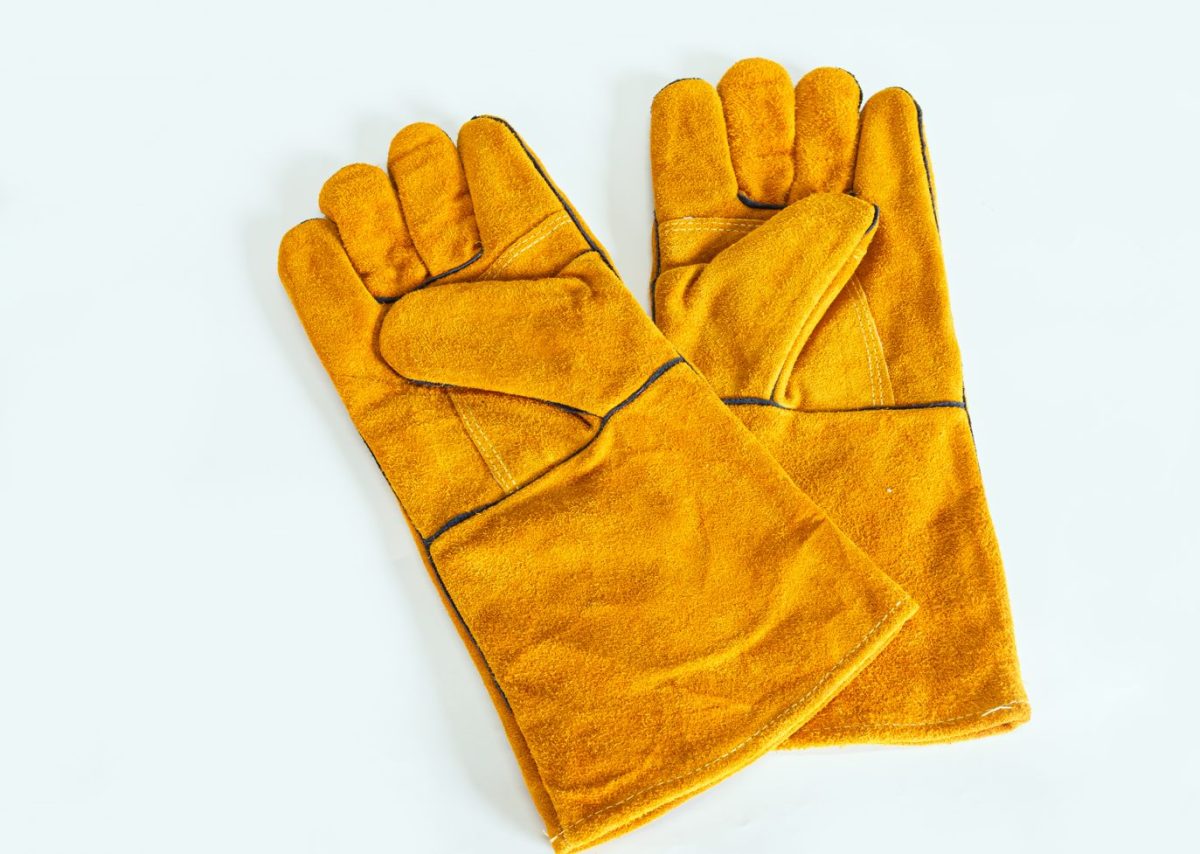
Heat-resistant gloves are also known as heat-resistant gloves. They are protective gloves that help protect workers’ hands from being injured when working with hot materials with high temperatures, such as working in the environment of iron and steel smelting, cement, etc., or applied in the field of heat resistance and heat radiation.
They are usually made from leather, fabric coated with aluminum, asbestos, etc.
Anti-Arc Gloves
Unlike insulating gloves, arc-resistant gloves are composed of many soft layers. These layers will help increase arc, heat, and fire resistance without affecting the user’s activities. Besides, to increase the durability of the gloves, people also sew them with Nomex yarn to ensure that they will not tear when exposed to electric arcs.
FAQs
Why is it essential to select the correct glove size for the task?
Selecting the appropriate glove size to achieve optimal efficiency and hand protection is crucial. If the size is too large, the glove runs the danger of slipping, which causes the wearer to lose both his capacity for gripping and his dexterity.
What should you look for while purchasing gloves?
Consider doing some inspections before going forward and completing the acquisition. First, examine the stitches to see if they are even and secure and how near they are to the leather’s edges. Check to see that the liner is in place. In this instance, it is necessary to examine the stitching techniques employed and the thread strength.
How can I tell whether my gloves are the right size?
Gloves should initially have a snug fit since they will eventually loosen up and conform to the shape of the wearer’s hand over time. When you first put on your gloves, your fingers should be slightly bent backward. If tiny crease forms by your knuckles, you will know that you have the correct size gloves.
How should your belt and your gloves go together?
Bet on the proper accessories to boost your self-assurance. In addition, if you’re going for an uncomplicated look but chic, gloves, and belts are the way to go. Pick up a pair of woolen gloves, a scarf, and an old-fashioned beanie when the temperature is low. These items with a neutral style can be accessorized with a coat in a dark hue, a watch, and a black belt.

